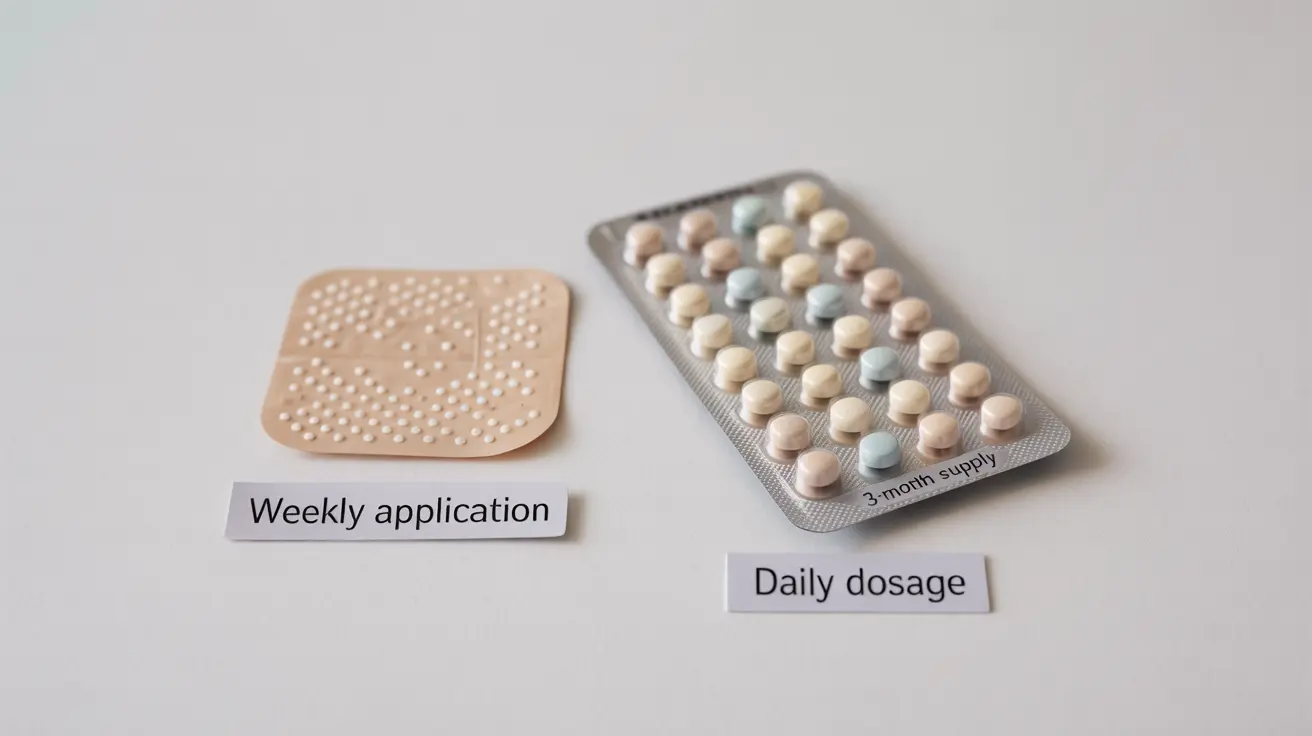Choosing between different birth control methods can be overwhelming, especially when comparing similar hormonal options like the birth control patch and pill. Both methods are effective forms of contraception, but they have distinct differences in how they're used, their effectiveness rates, and potential side effects that could influence your decision.
This comprehensive guide will help you understand the key differences between the birth control patch and pill, enabling you to make an informed decision about which method might better suit your lifestyle and health needs.
Understanding the Basics of Each Method
The Birth Control Patch
The birth control patch is a thin, beige, square adhesive that delivers hormones through your skin. You apply a new patch weekly for three weeks, followed by one patch-free week. The patch contains estrogen and progestin, similar to the combination pill.
The Birth Control Pill
Birth control pills are taken orally once daily and come in two main types: combination pills (containing estrogen and progestin) and progestin-only pills (mini-pills). Most pills require consistent daily use with no breaks, or 21 active pills followed by 7 inactive pills.
Effectiveness Comparison
Both methods are highly effective when used correctly, but their success rates vary between perfect and typical use:
- Perfect use effectiveness:
- Birth control patch: 99%
- Birth control pill: 99%
- Typical use effectiveness:
- Birth control patch: 91%
- Birth control pill: 91%
Side Effects and Health Considerations
Common Side Effects
Both methods may cause similar side effects, including:
- Nausea
- Breast tenderness
- Headaches
- Mood changes
- Irregular bleeding
Unique Considerations for the Patch
The patch has some specific considerations:
- Skin irritation at the application site
- Increased risk of detachment during exercise or swimming
- Visible on the skin
- May be less effective for women over 198 pounds
Unique Considerations for the Pill
Pills have their own specific considerations:
- Must be taken at the same time daily
- Can be affected by certain medications and conditions
- May be harder to remember than weekly application
- No visibility concerns
Usage and Application
The fundamental difference in usage makes each method suitable for different lifestyles:
Patch Application
Apply the patch to clean, dry skin on your:
- Lower abdomen
- Upper arm
- Buttocks
- Upper back
Pill Administration
Take one pill daily:
- At the same time each day
- With or without food
- Following the specific schedule for your pill type
Frequently Asked Questions
How does the effectiveness of the birth control patch compare to the birth control pill with typical and perfect use?
Both the birth control patch and pill are equally effective when used perfectly (99%) and typically (91%). The key difference lies in user adherence rather than the methods themselves.
What are the main side effects and risks associated with the birth control patch versus the pill?
Both methods share common side effects like nausea, headaches, and mood changes. The patch may cause additional skin irritation and has a higher visibility factor, while the pill requires strict daily timing and can be affected by various medications.
How do you properly use the birth control patch and how is it different from taking the pill daily?
The patch is applied weekly for three weeks, followed by a patch-free week. Pills must be taken daily at the same time. The patch offers more flexibility in daily scheduling but requires weekly attention to changing the patch correctly.
Who should avoid using the birth control patch due to health risks or weight considerations?
Women who weigh over 198 pounds, smoke, are over 35, or have certain health conditions like blood clotting disorders should avoid the patch. Similar restrictions apply to the pill, but weight is less of a concern.
Does the birth control patch offer any advantages in convenience or user adherence over the pill?
The patch typically offers better convenience with weekly versus daily administration. This can lead to better adherence for some users, especially those who struggle to remember daily pills. However, the patch's visibility and potential for detachment may be disadvantages for some users.




